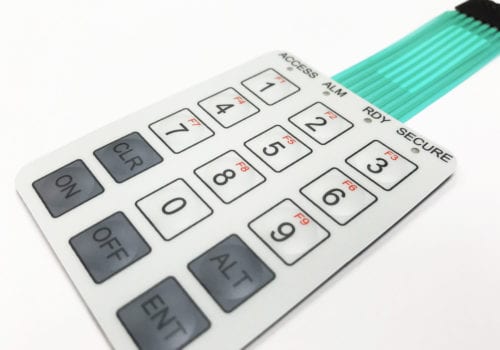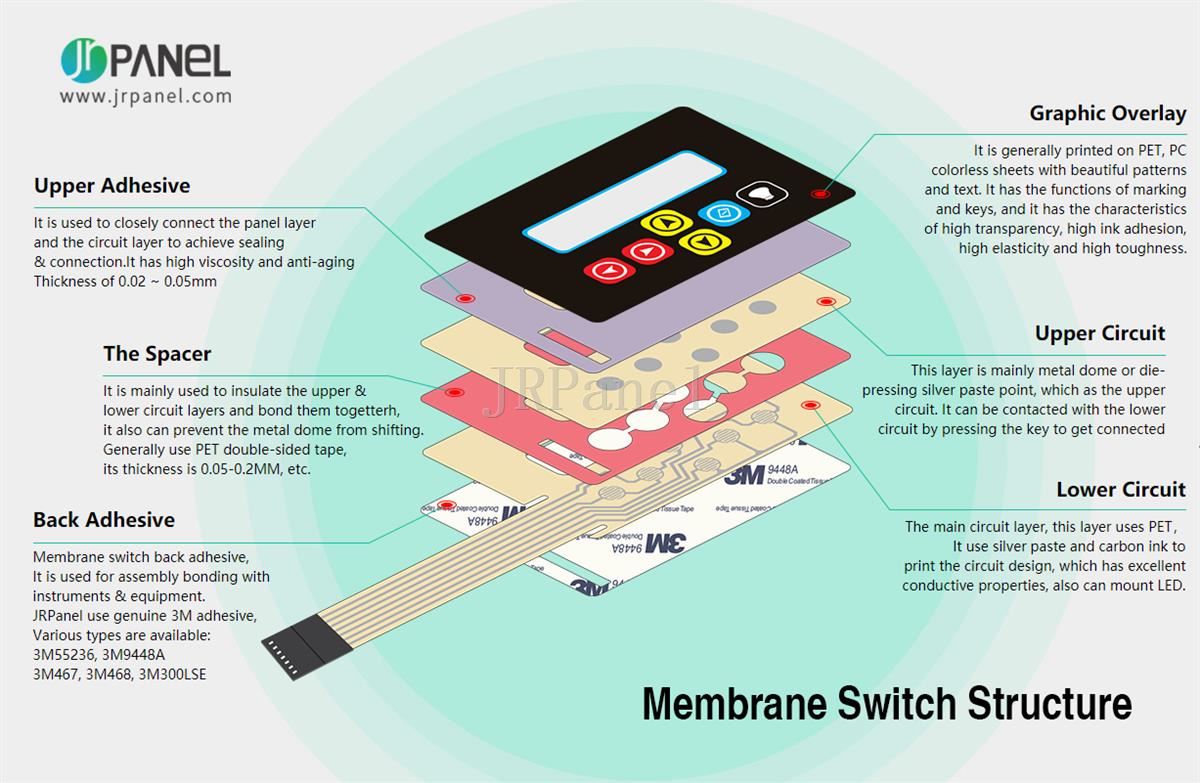Discover the Future of Control Interfaces: Why Membrane Switches Over Are Getting Popularity
As industries significantly focus on efficient and straightforward control interfaces, membrane layer switches are becoming a compelling solution that incorporates performance with design adaptability. Their strength and small nature make them especially suited for a variety of applications, from healthcare to consumer electronics. With the surge of wise modern technology and sustainability worries, the capabilities and technologies surrounding membrane layer changes warrant closer exam. What details advantages do they provide that could redefine our communications with innovation in the coming years?
Comprehending Membrane Layer Switches
Membrane switches are integral parts in modern-day electronic devices, serving as user interfaces in between machines and users. These switches consist of several layers, commonly including a graphic overlay, a spacer layer, and a circuit layer. When an individual presses a button on the overlay, the top layer reaches the circuit layer, finishing a circuit and sending out a signal to the tool. This simple yet effective mechanism enables seamless interaction with innovation.

Durability is an additional essential feature, as membrane layer buttons can be designed to stand up to environmental factors such as wetness, dust, and chemicals. This strength makes them suitable for applications in severe problems. In general, understanding the framework and feature of membrane layer switches is essential for appreciating their function in the advancement of interface in today's technology-driven globe.
Key Benefits of Membrane Switches
Offering a series of benefits, membrane buttons have come to be a preferred choice in different applications (Membrane Switches). One of the main benefits is their compact layout, enabling makers to maximize space in gadgets without compromising performance. Membrane layer buttons are lightweight, which is especially beneficial in mobile electronic tools

Furthermore, these buttons give exceptional resilience. Built from versatile products, they are immune to dirt, dampness, and a variety of environmental elements, making them appropriate for extreme problems. This toughness often translates into a longer lifespan compared to traditional mechanical switches.
Moreover, membrane switches enable seamless integration of graphics and symbols, offering aesthetic adaptability and boosting customer experience. Modification alternatives are extensive, making it possible for brand names to develop one-of-a-kind user interfaces that straighten with their item identification.
The level surface area of membrane layer changes avoids the accumulation of dust and gunk, making them optimal for hygienic settings. Membrane switches are cost-efficient, as they can be created in high volumes at lower prices, making them easily accessible for a broad array of markets.
Applications Across Industries

A myriad of markets are progressively taking on membrane switches because of their convenience and functionality. These regulate interfaces are specifically prevalent in the vehicle industry, where they are made use Read More Here of in dashboards and infomercial systems, providing a streamlined and user-friendly user interface. In the medical field, membrane layer changes promote the procedure of analysis devices and person surveillance systems, making sure integrity and convenience of usage in vital scenarios.
Additionally, the consumer electronic devices market advantages from membrane layer switches in tools such as microwaves and remotes, enabling structured design and enhanced durability. Membrane Switches. The aerospace industry likewise uses membrane layer buttons in cabin controls, where space constraints demand effective and small style remedies
In addition, the commercial sector employs membrane buttons in equipment control board, offering resilience against harsh environments and guaranteeing operational efficiency. Retail environments have embraced membrane layer buttons in point-of-sale systems, boosting customer communication while preserving aesthetic charm.
Design Trends in Membrane Switches
Evolving alongside technological website here advancements, design trends in membrane switches are increasingly concentrated on boosting customer experience and visual charm. Modern membrane layer buttons are being created for simpleness and user-friendly usage, enabling users to navigate interfaces effortlessly. This change in the direction of user-centric layout stresses responsive feedback, guaranteeing that users receive prompt verification of their actions.
Additionally, customizable graphics and shades are ending up being basic features in membrane layer button designs. This flexibility permits makers to create personalized user interfaces that align with branding and details user demands. The consolidation of backlighting is another famous pattern, as it not just improves presence in low-light problems but additionally adds an aesthetically striking aspect to the total style.
Furthermore, the pattern towards lightweight and slim materials is obtaining traction, permitting sleeker designs that can flawlessly integrate right into various applications. This change not only boosts appearances however additionally contributes to the general functionality and toughness of the switches. Green materials are progressively being used, showing a broader movement in the direction of sustainability in item style. These layout patterns collectively underscore the expanding importance of integrating type and function in the development of membrane switches, eventually enriching the customer experience.
Future Outlook for Control Interfaces
The future of control interfaces is positioned for substantial transformation as arising technologies proceed to improve individual communications throughout numerous tools. The combination of sophisticated materials, such as conductive inks and flexible electronics, will certainly enhance the adaptability and capability of membrane buttons, making them significantly versatile to an array of applications. Furthermore, the increase of the Net of Things (IoT) will certainly drive need for even more instinctive, straightforward interfaces that can effortlessly incorporate with smart tools.
As man-made intelligence and equipment understanding advance, control user interfaces will likely include even more individualized attributes, allowing customers to engage with devices in manner ins which are customized to their preferences and behaviors (Membrane Switches). YOURURL.com This change in the direction of user-centric design will certainly place membrane switches as a principal out there, particularly in sectors like health care, automobile, and customer electronic devices
Additionally, the promote sustainability will encourage makers to check out environmentally friendly materials and production approaches, guaranteeing that the future of control user interfaces aligns with environmental factors to consider. In general, as innovation remains to development, membrane layer switches will come to be progressively innovative, leading the way for innovative control services that enhance user experience and operational performance across varied markets.
Final Thought
In final thought, the raising adoption of membrane layer switches highlights their value in the development of control user interfaces. As user-friendly user interfaces come to be crucial in the context of IoT and AI improvements, membrane layer switches are positioned to play a crucial function.
As markets increasingly prioritize efficient and easy to use control user interfaces, membrane buttons are arising as a compelling service that combines performance with design adaptability.Resilience is another essential feature, as membrane layer buttons can be developed to withstand environmental factors such as wetness, dirt, and chemicals.Developing together with technological developments, layout trends in membrane buttons are significantly concentrated on improving customer experience and aesthetic allure. Modern membrane layer buttons are being made for simpleness and instinctive usage, enabling individuals to navigate user interfaces effortlessly. These design trends collectively emphasize the expanding value of integrating form and feature in the development of membrane layer switches, inevitably improving the individual experience.
Comments on “Discover Exactly How Membrane Switches Boost Usability and Product Performance”